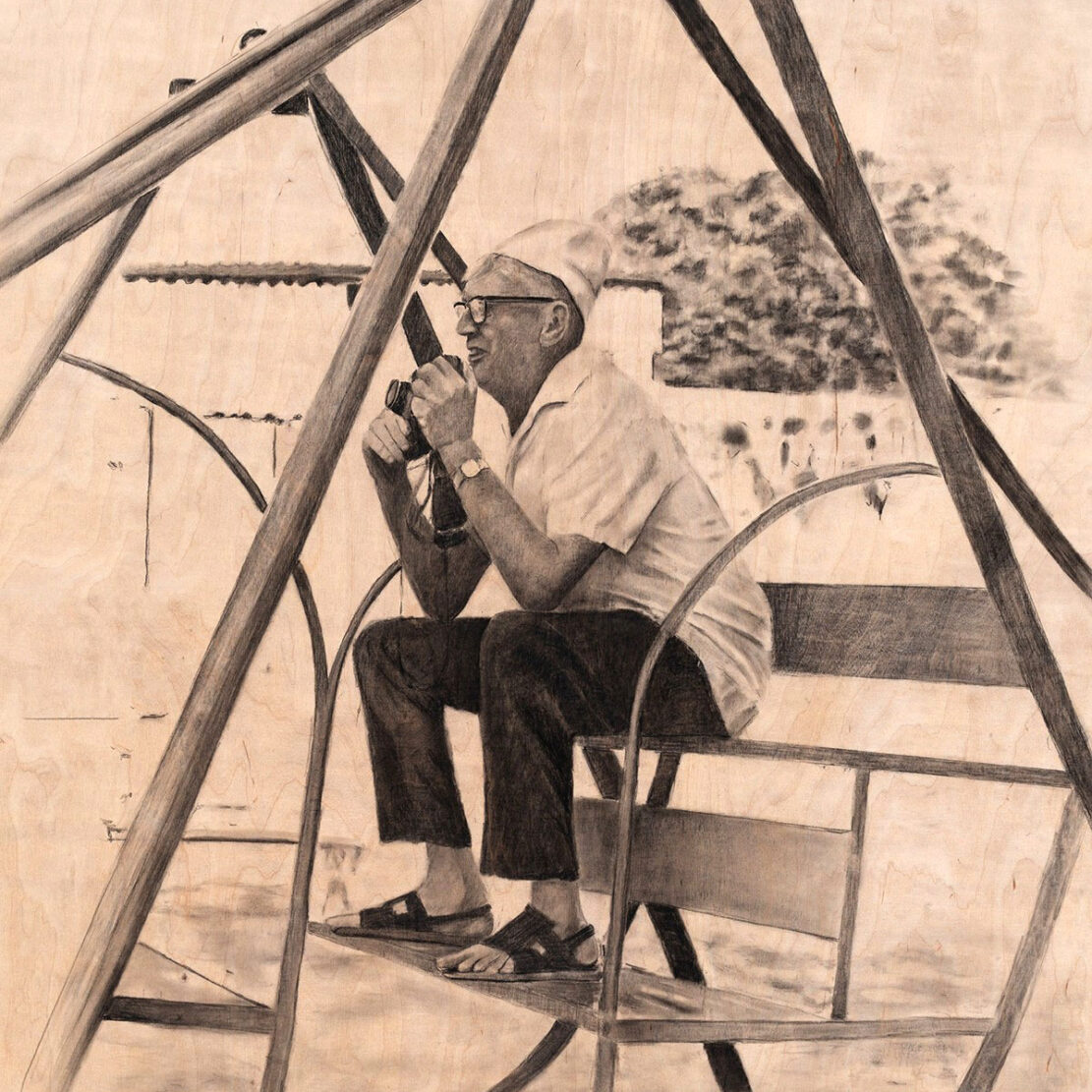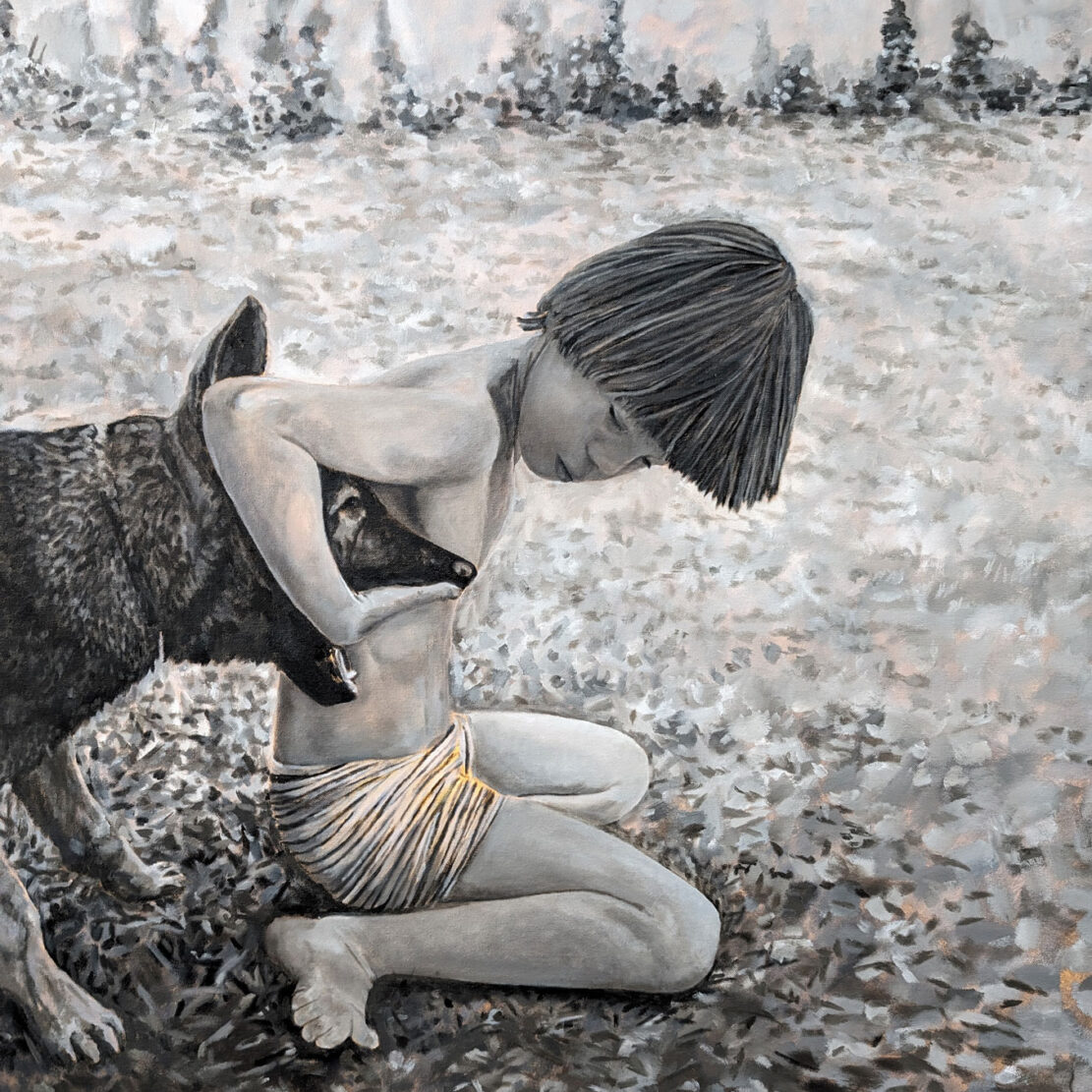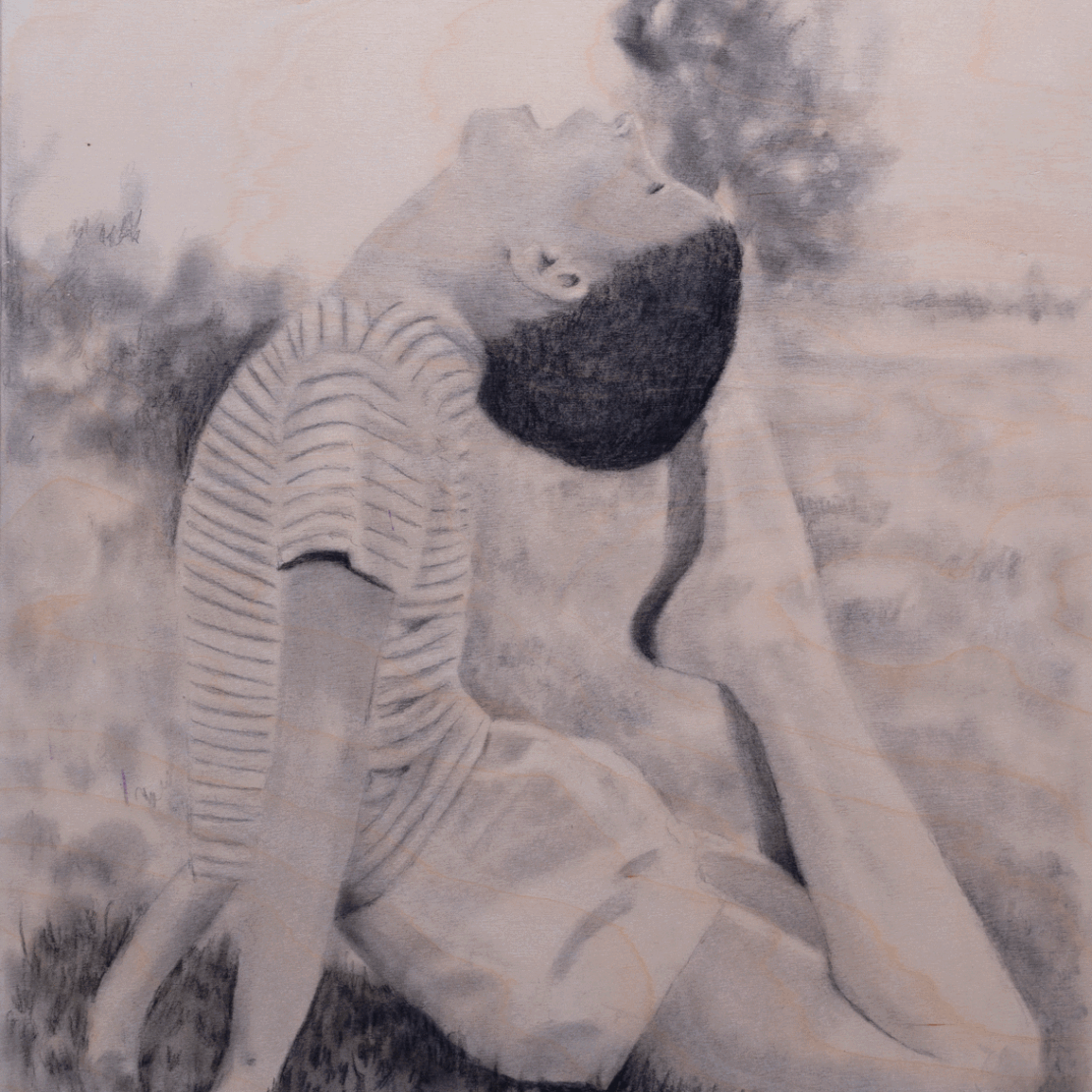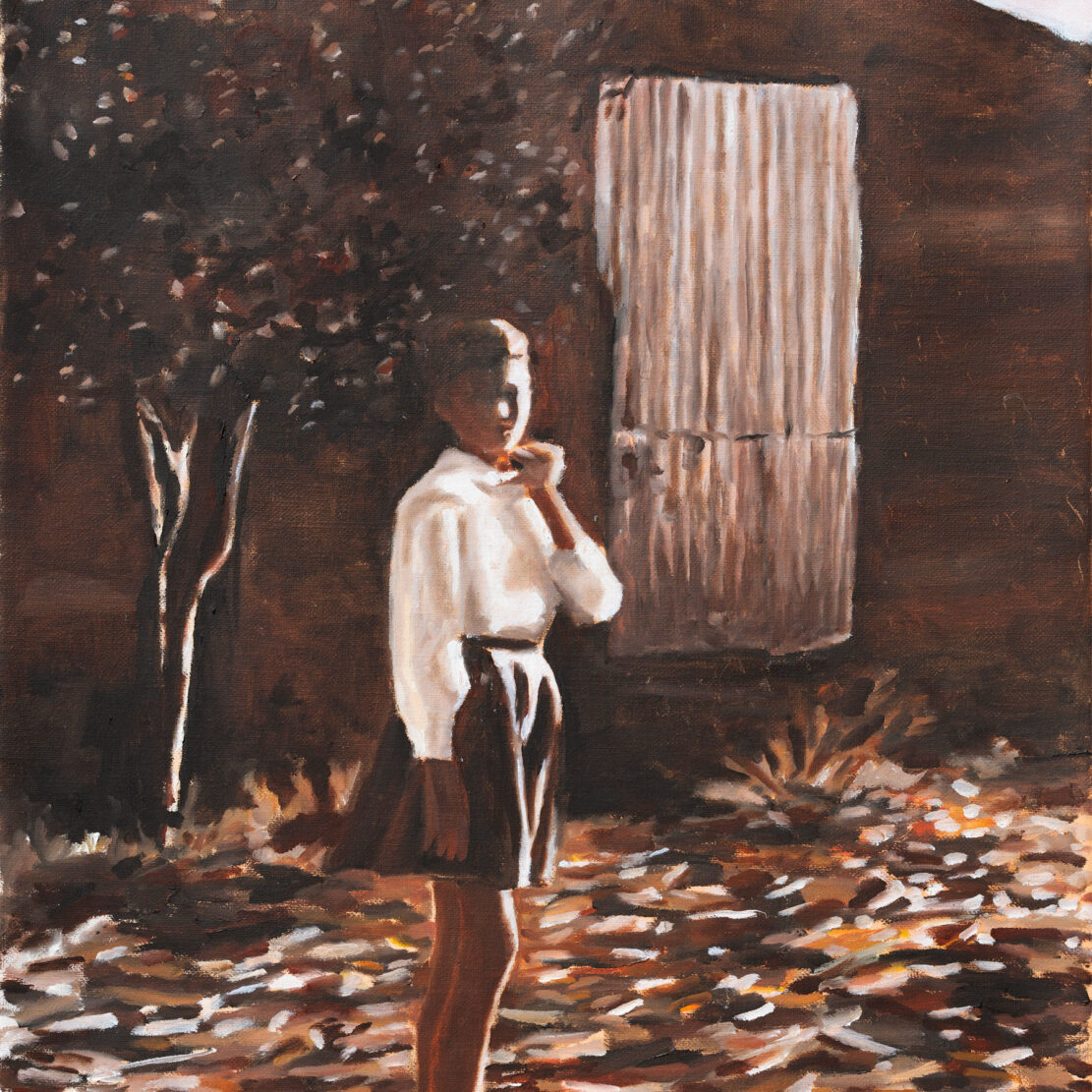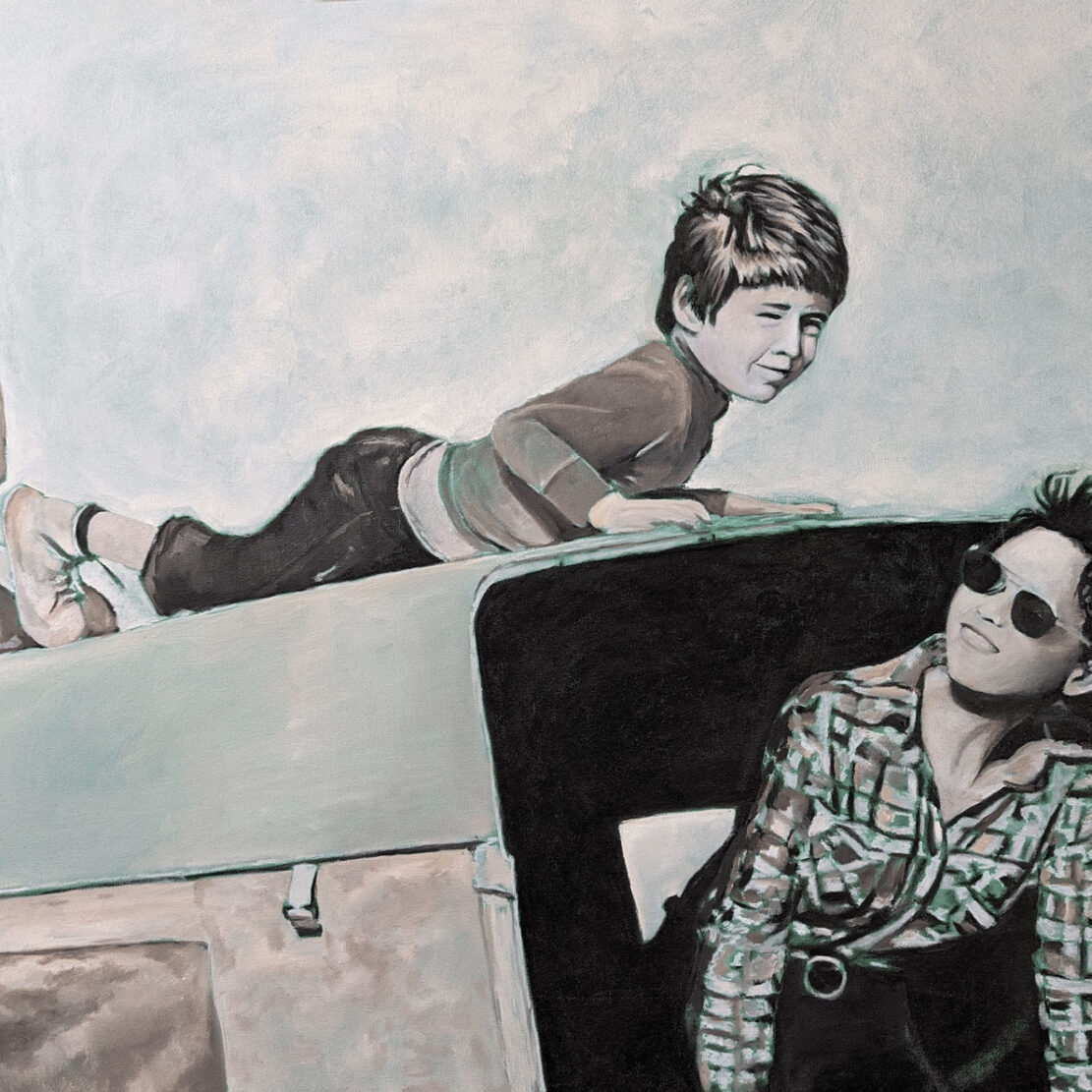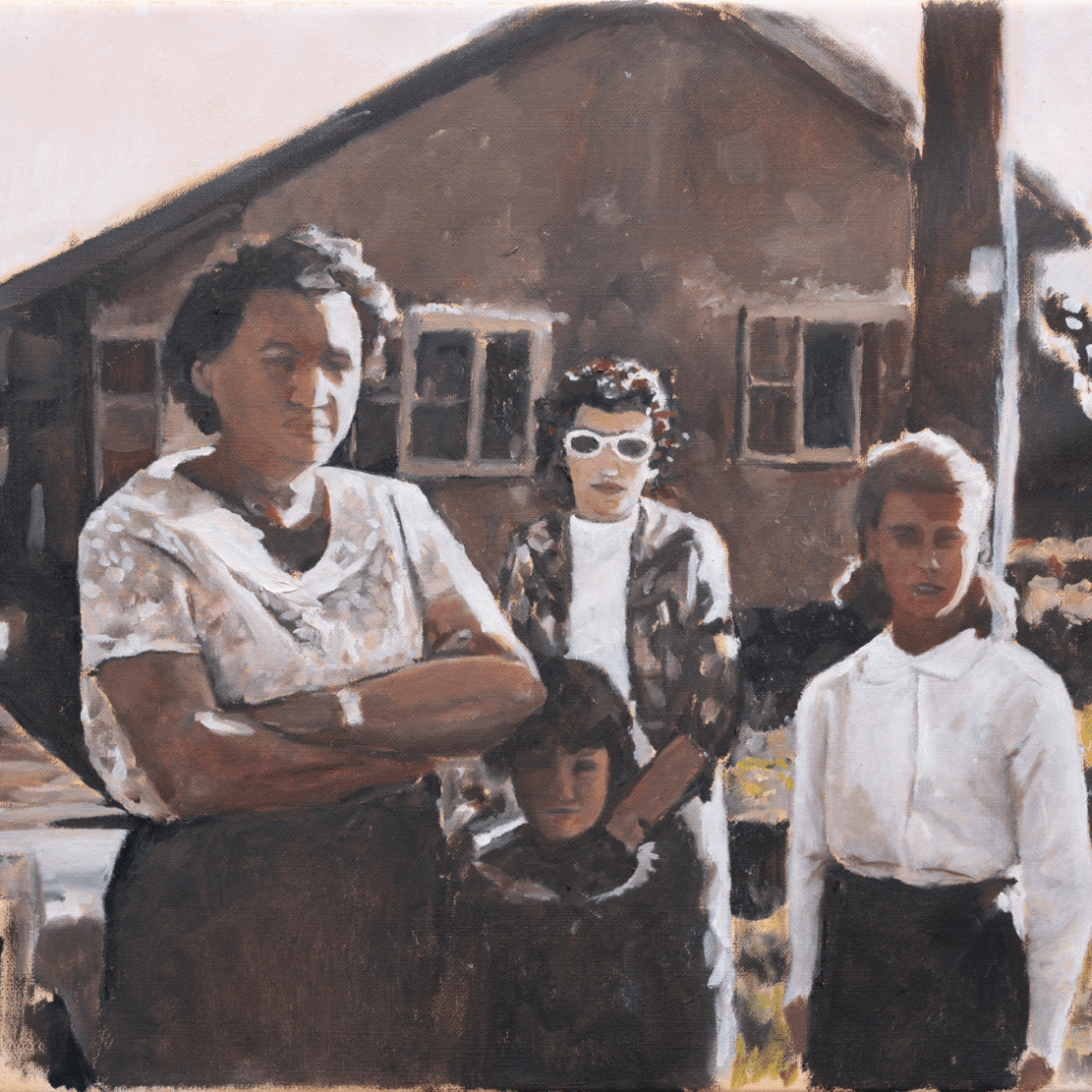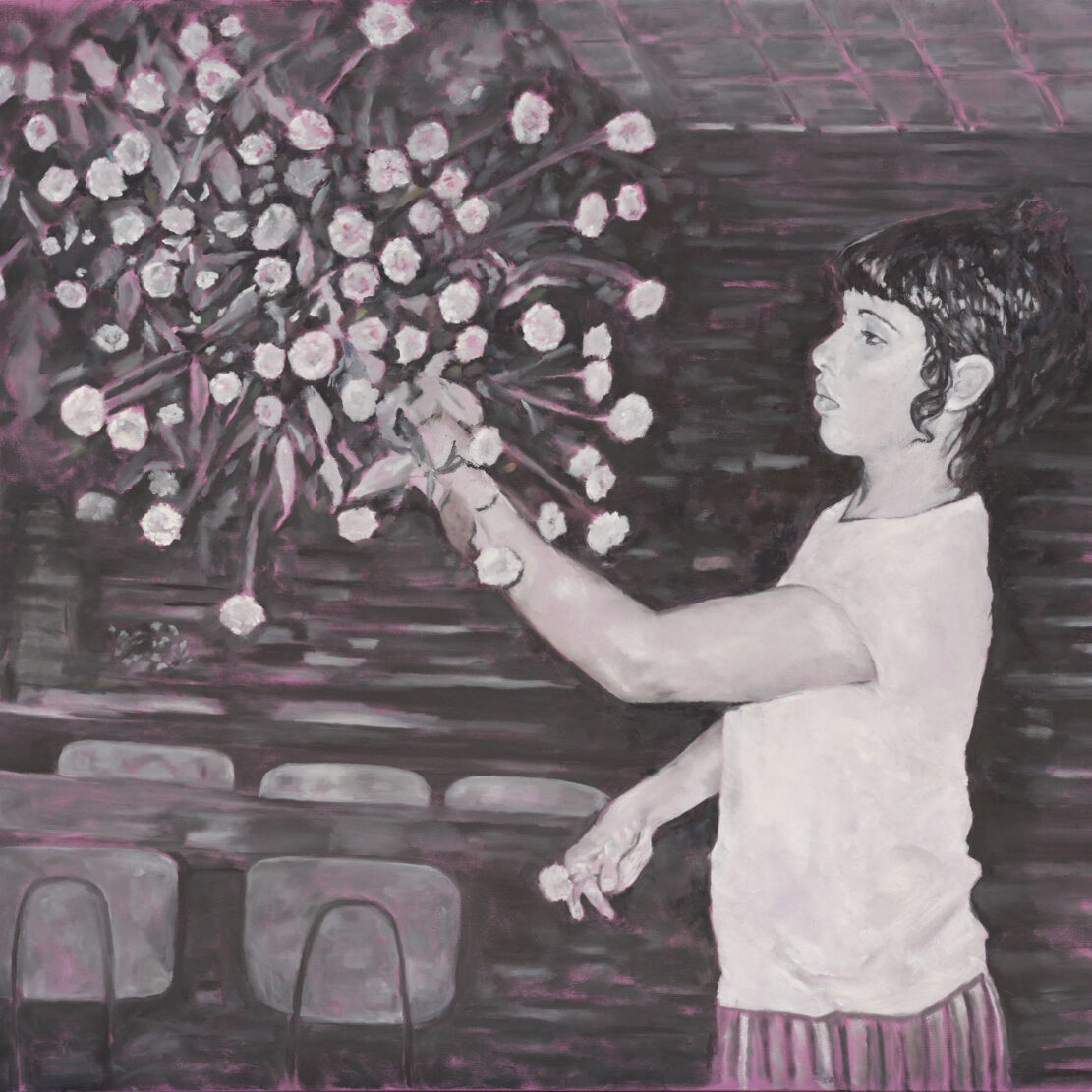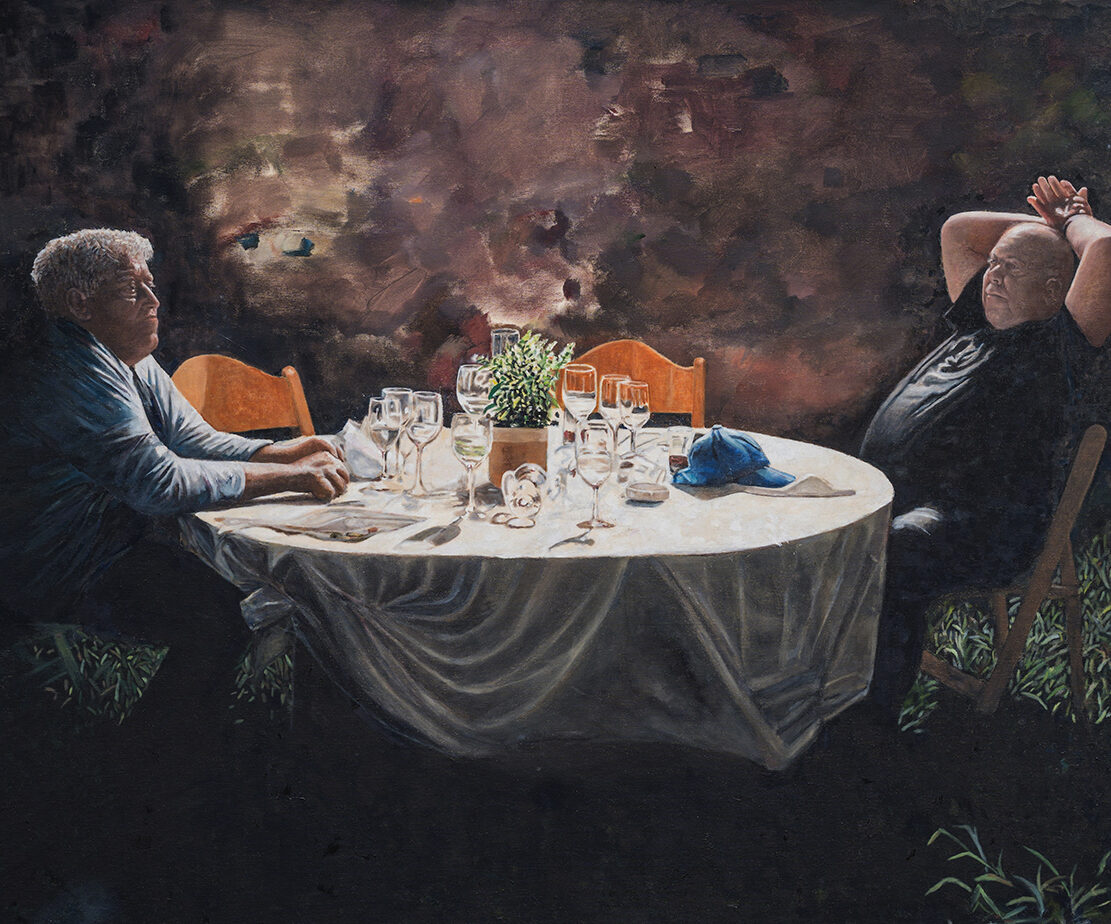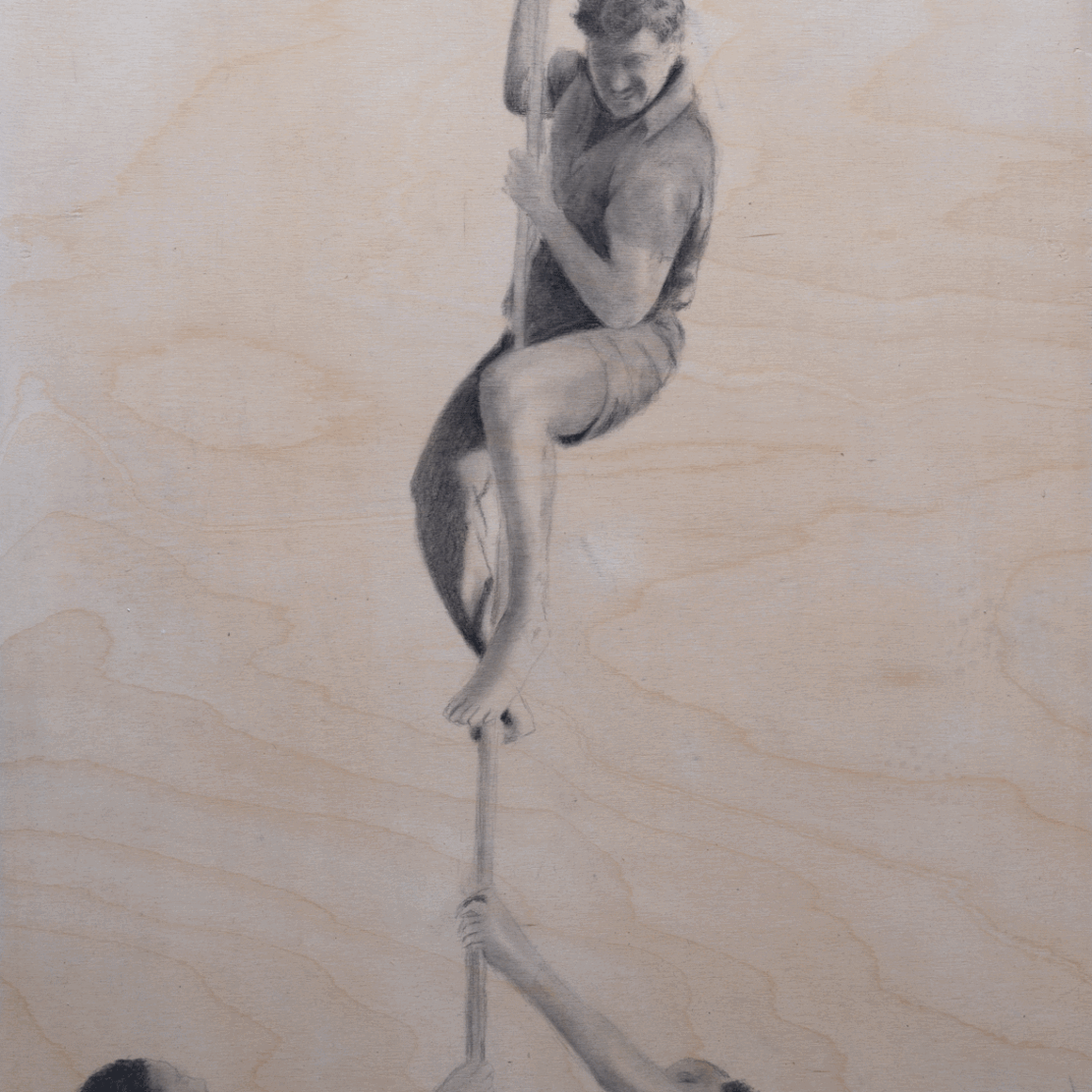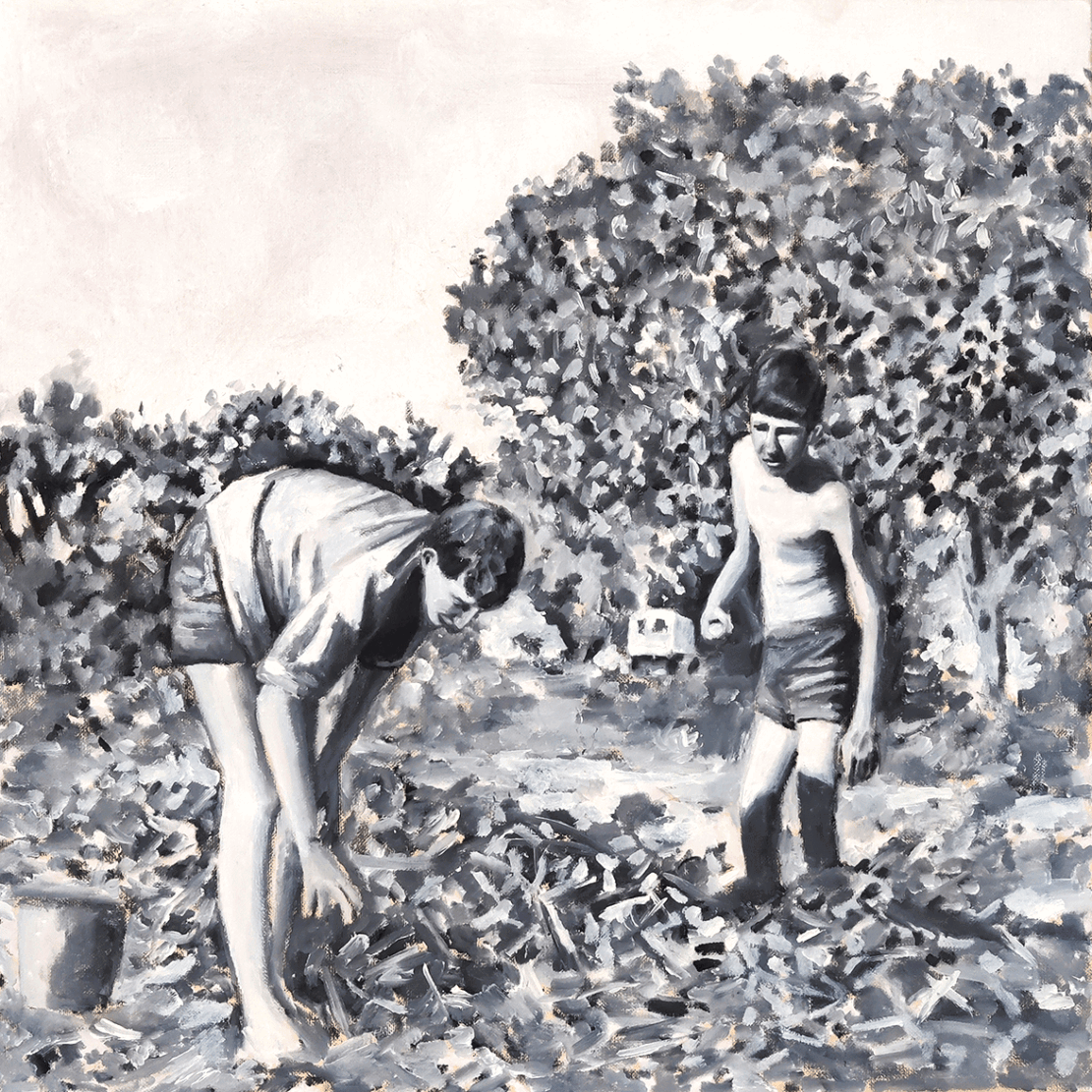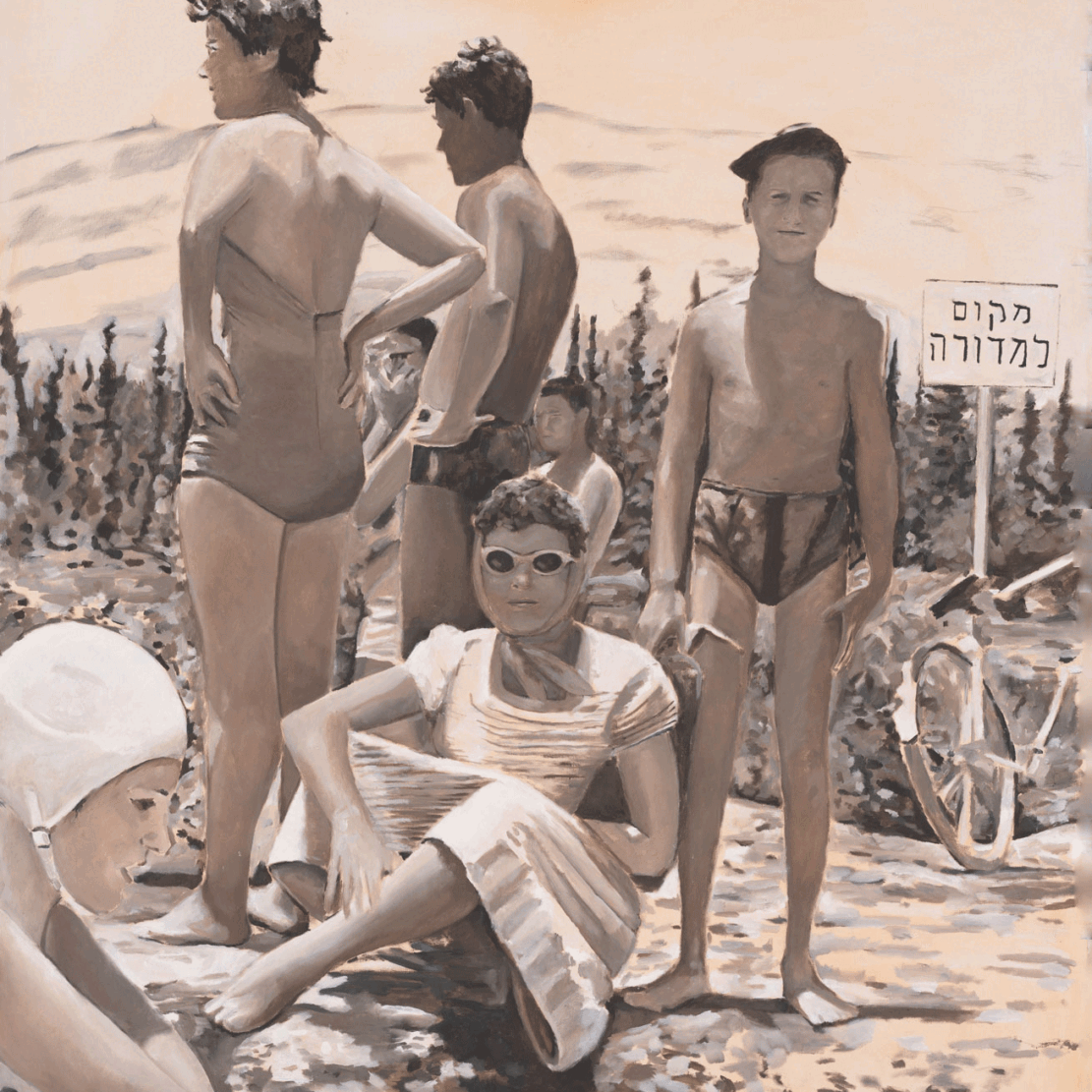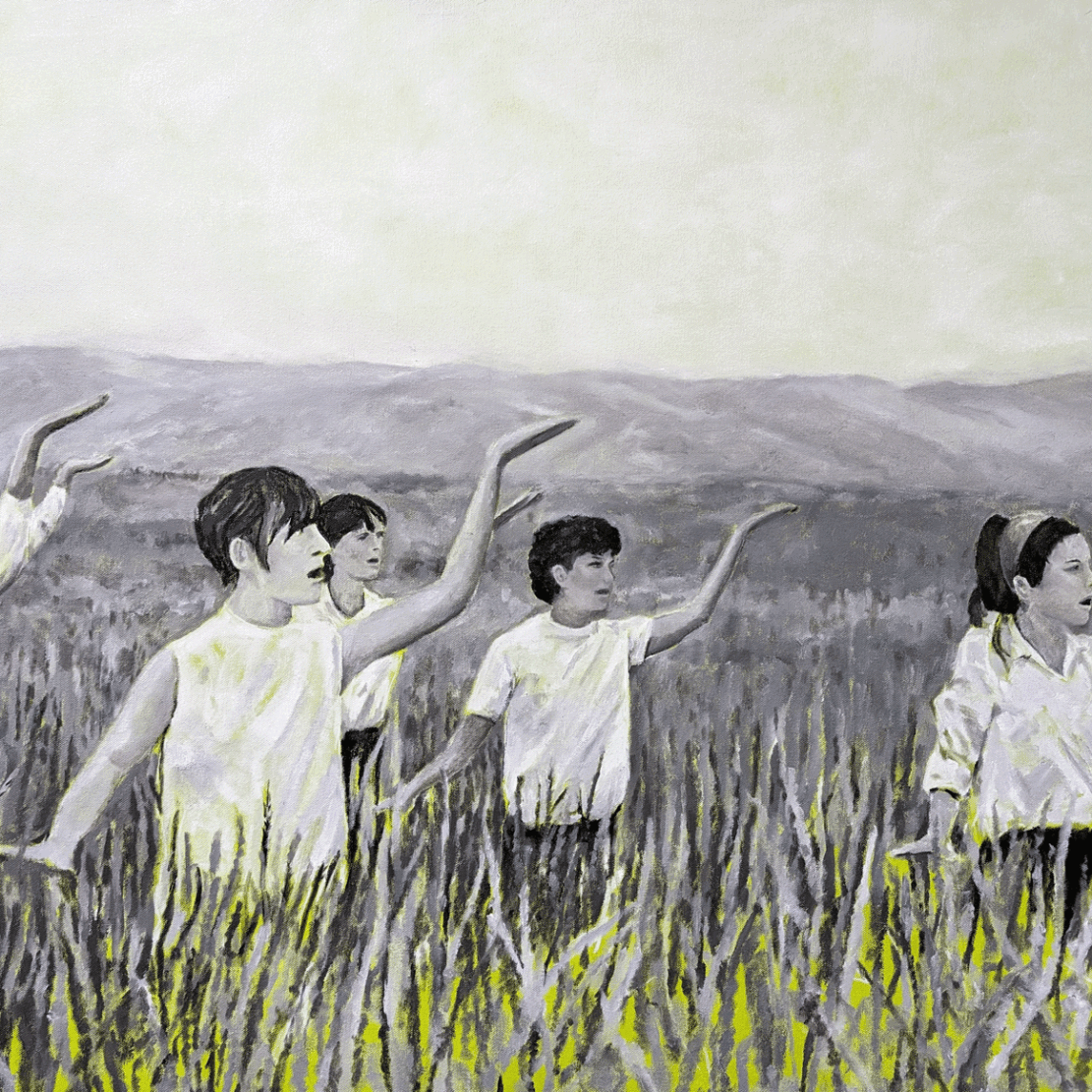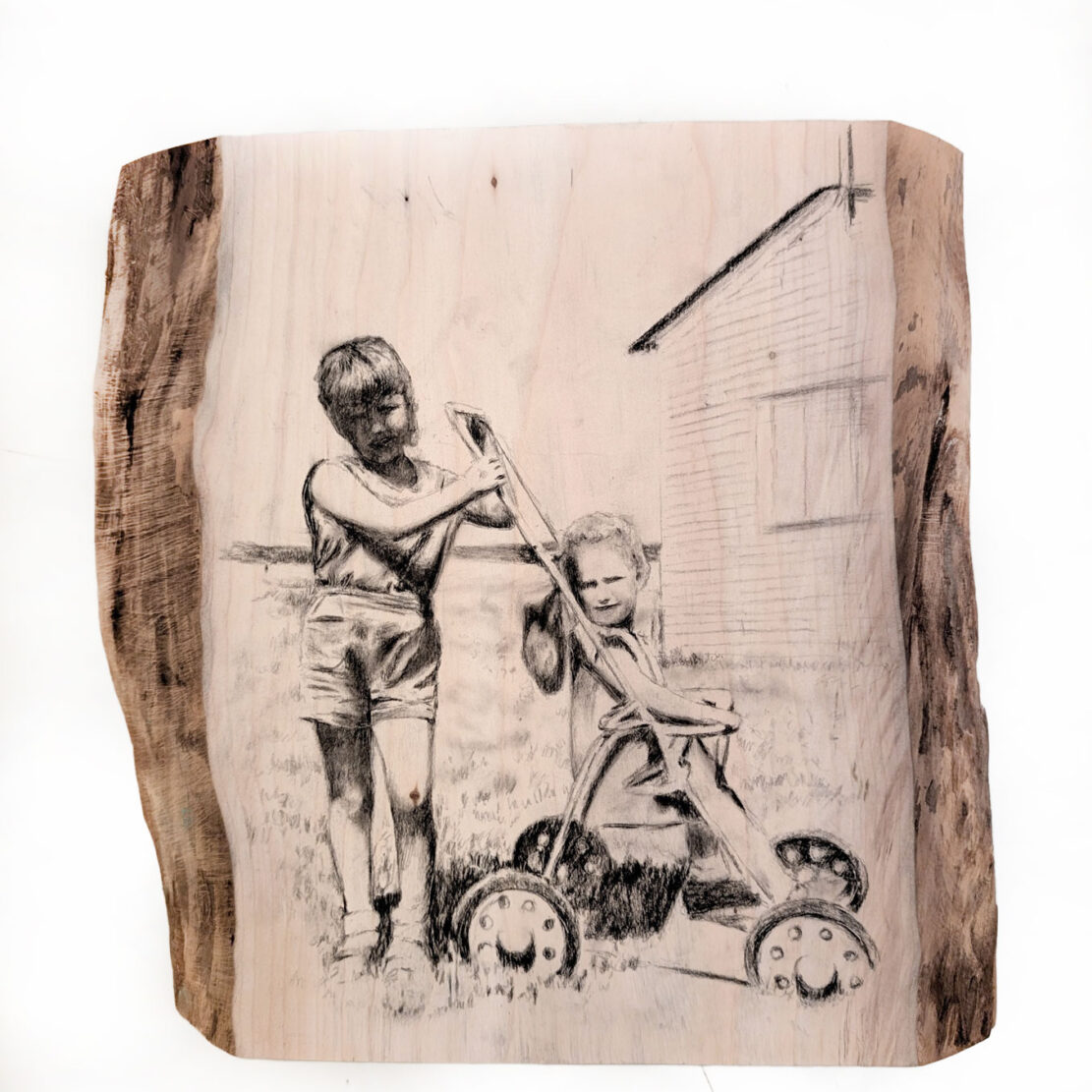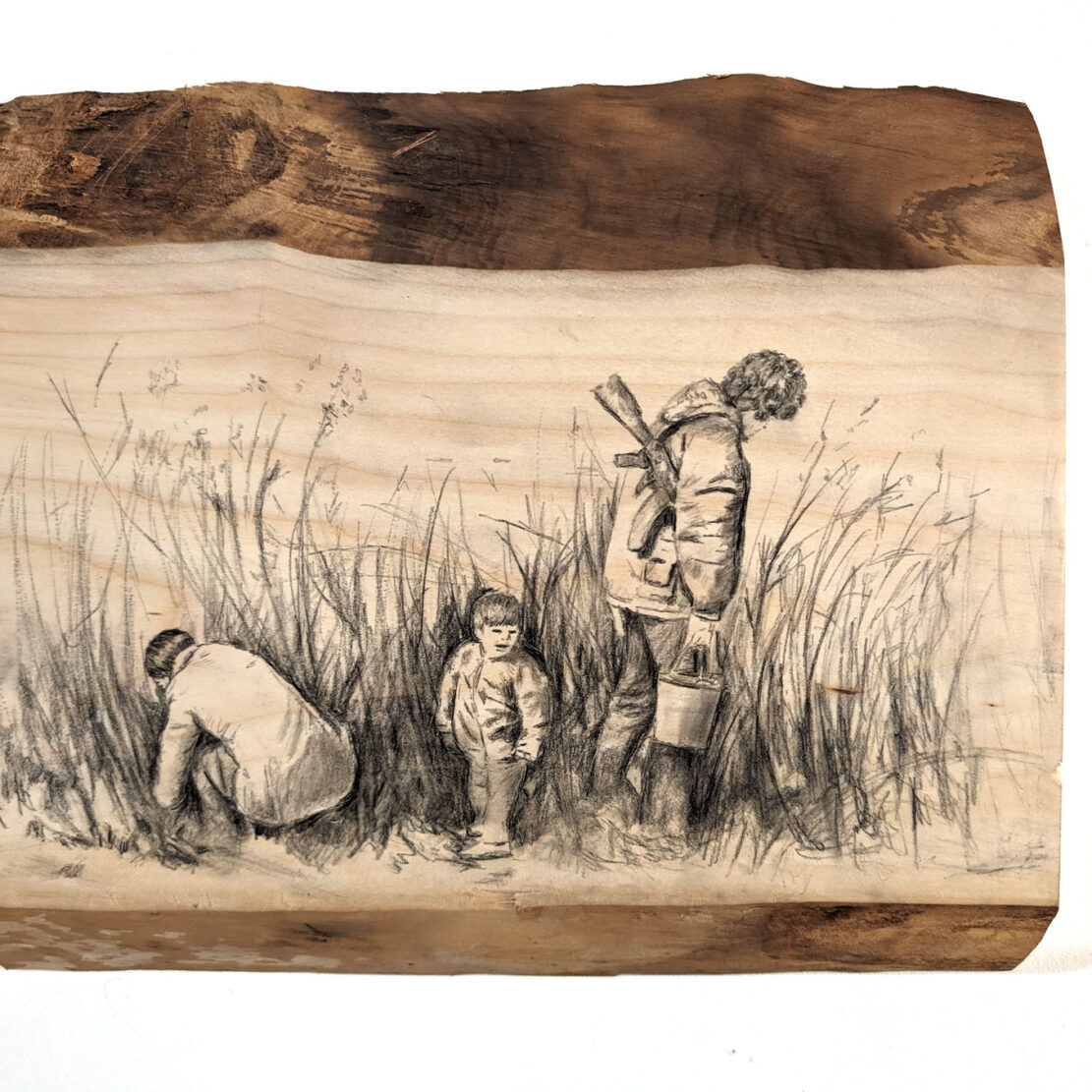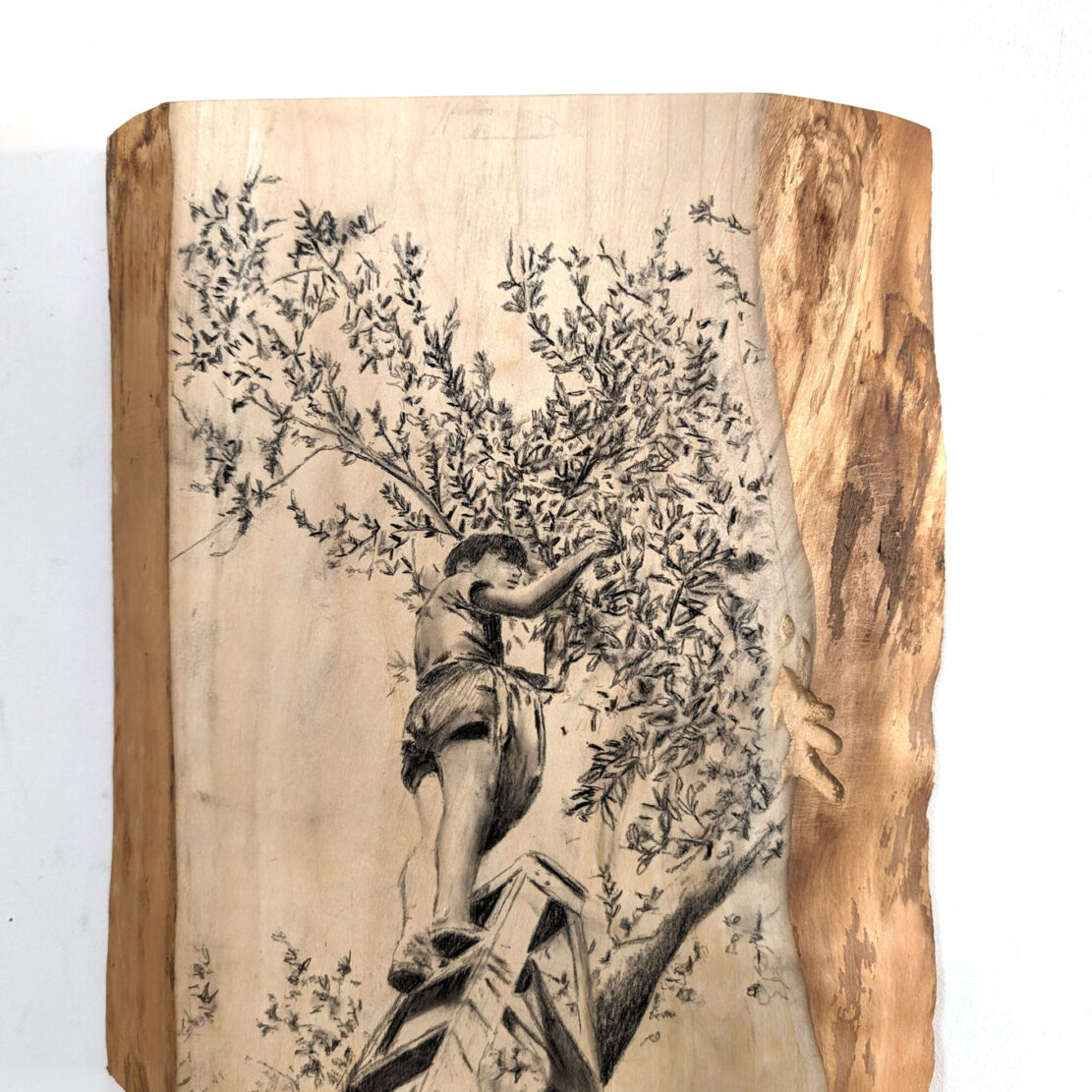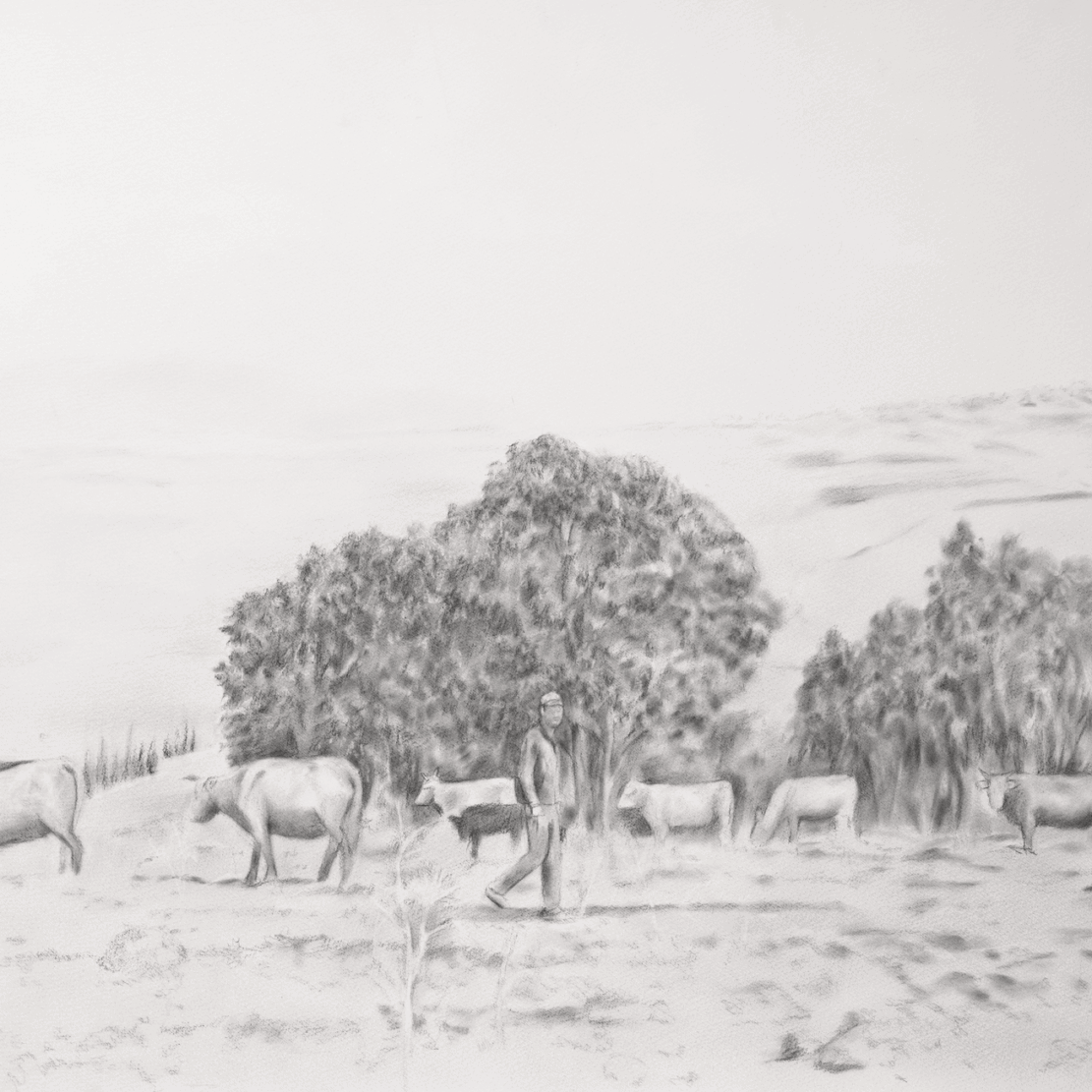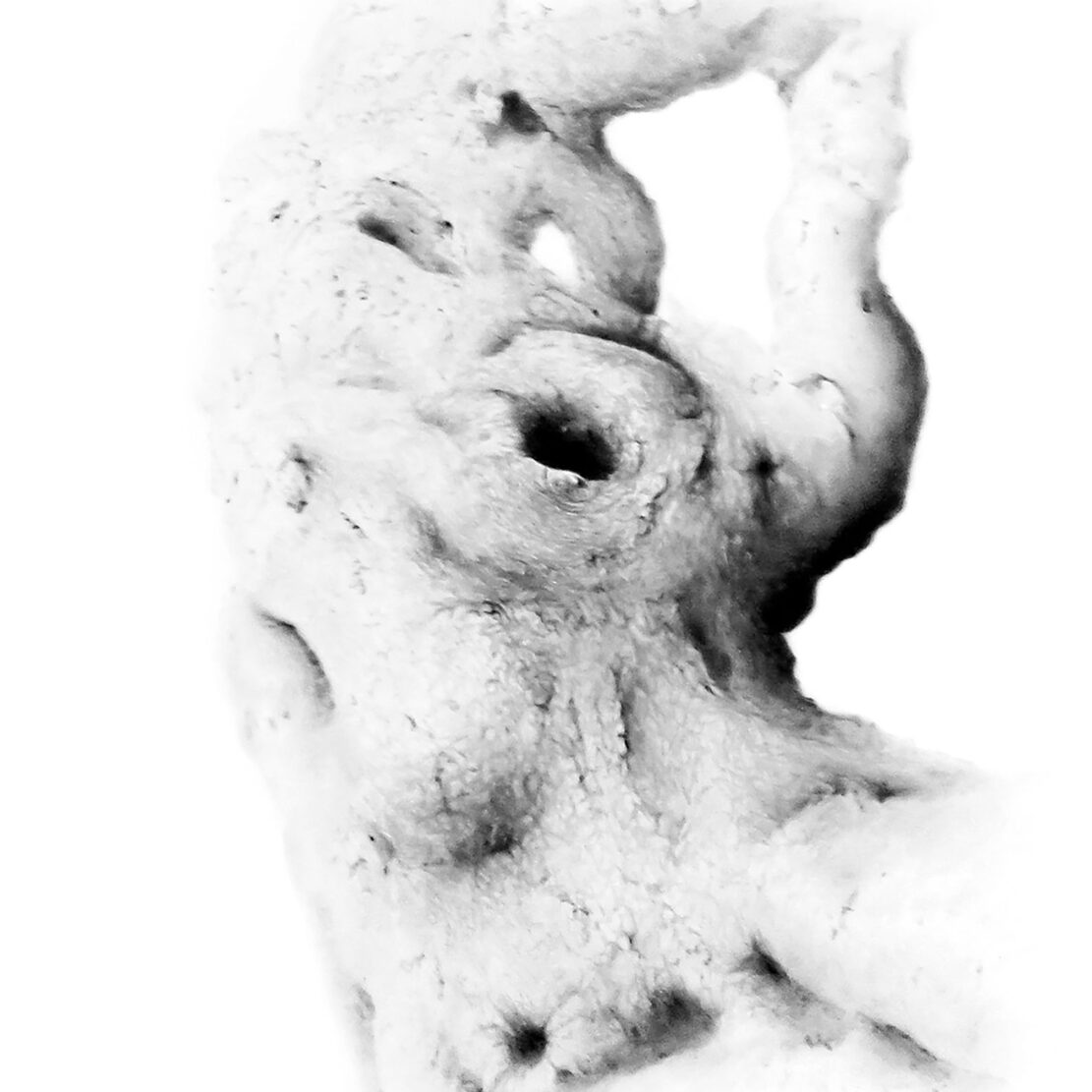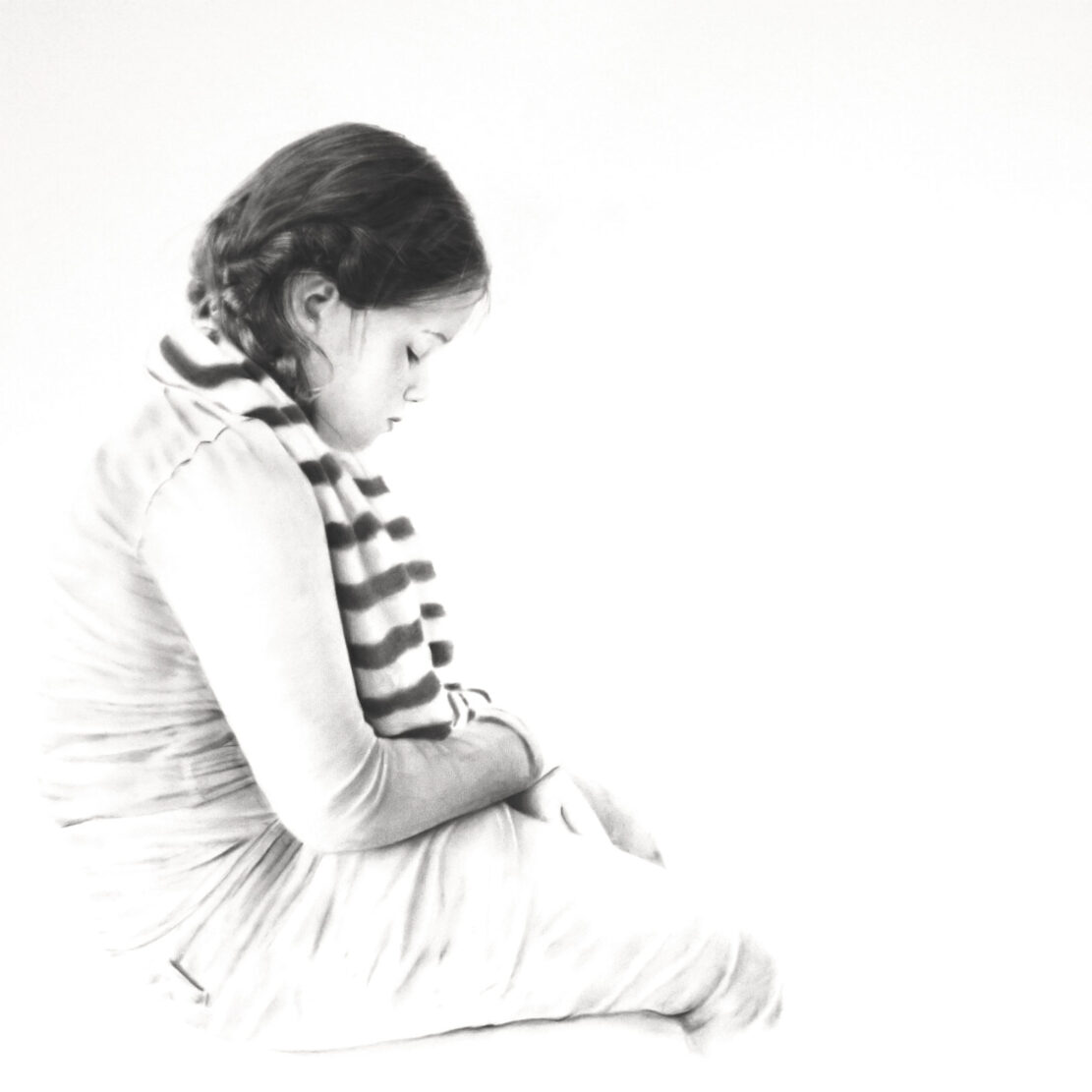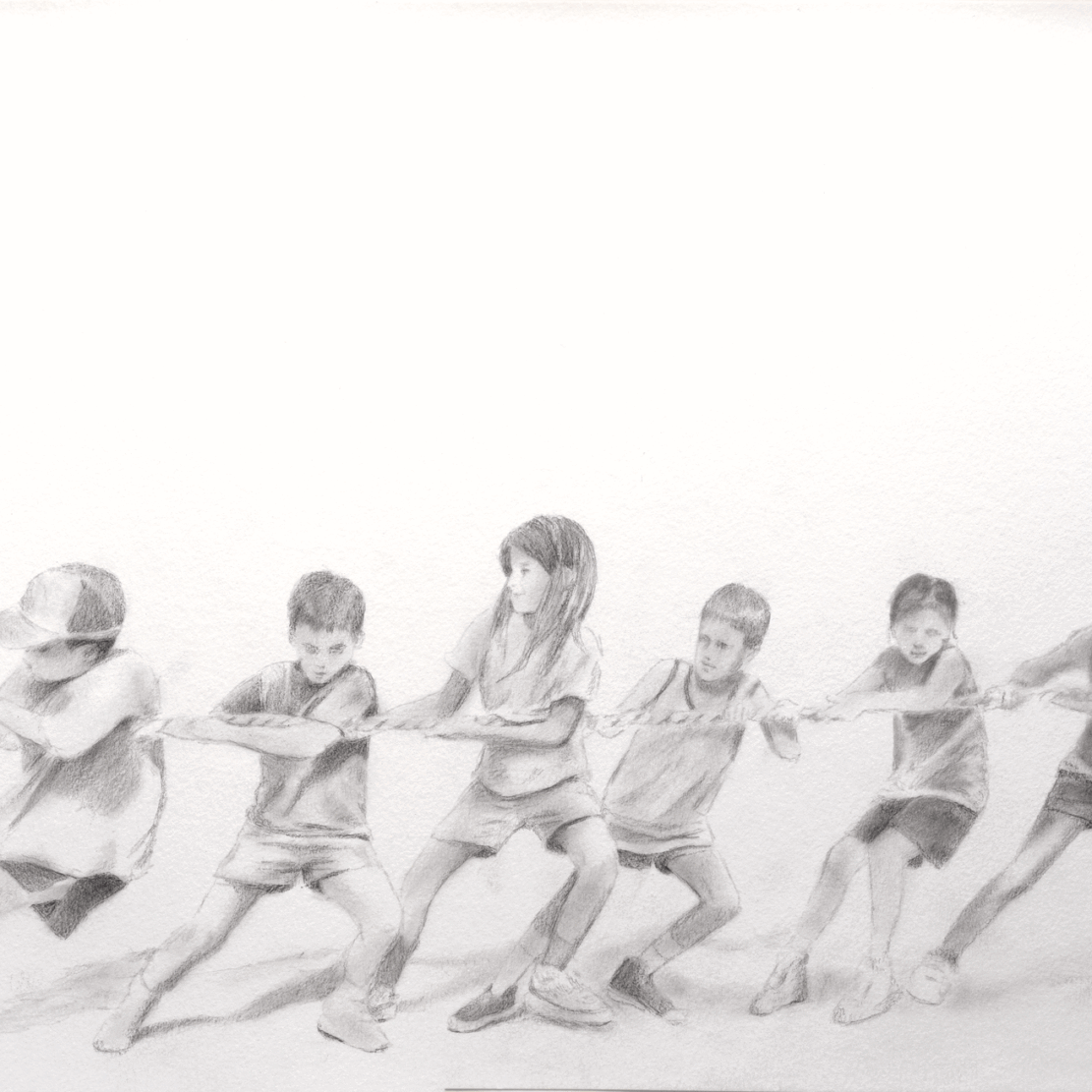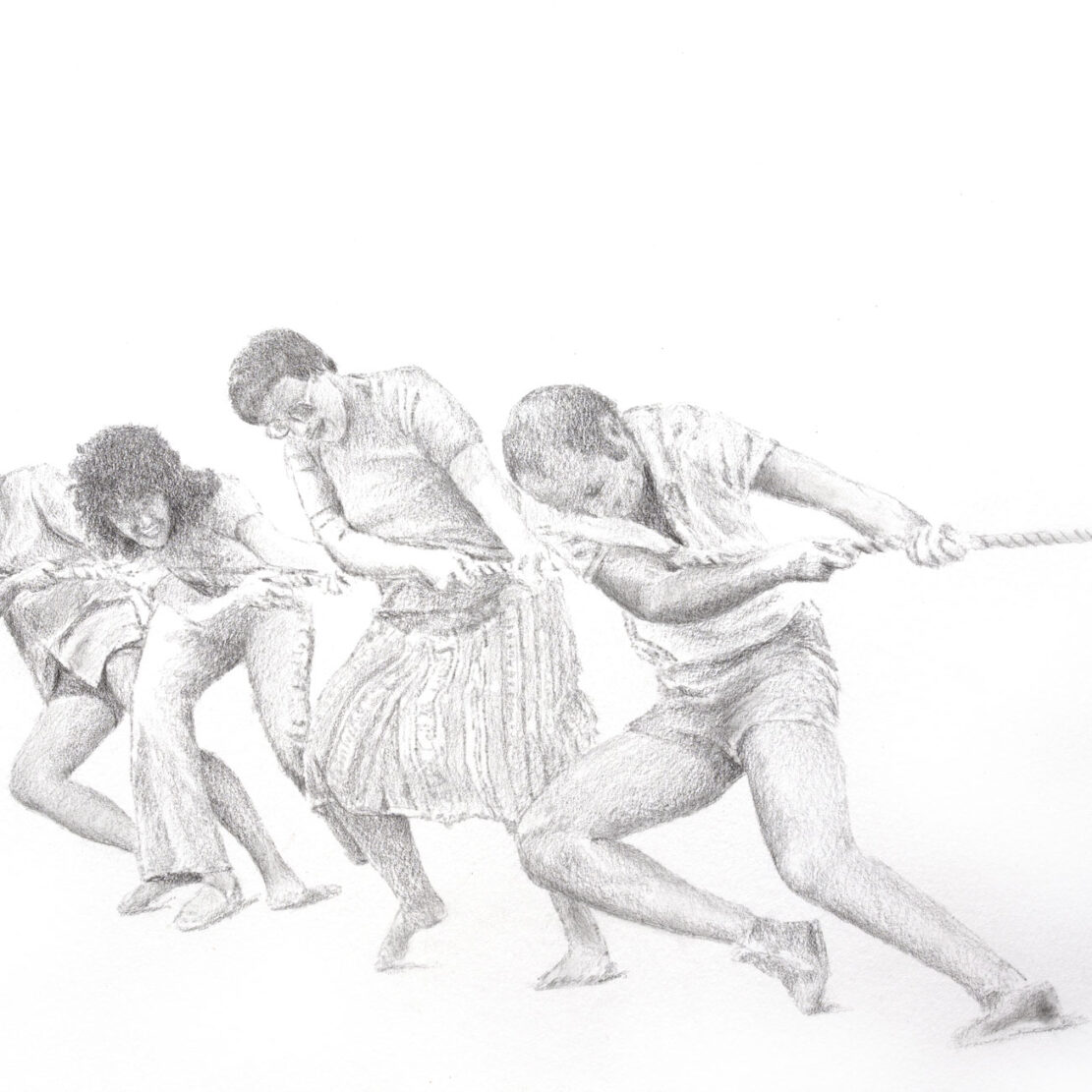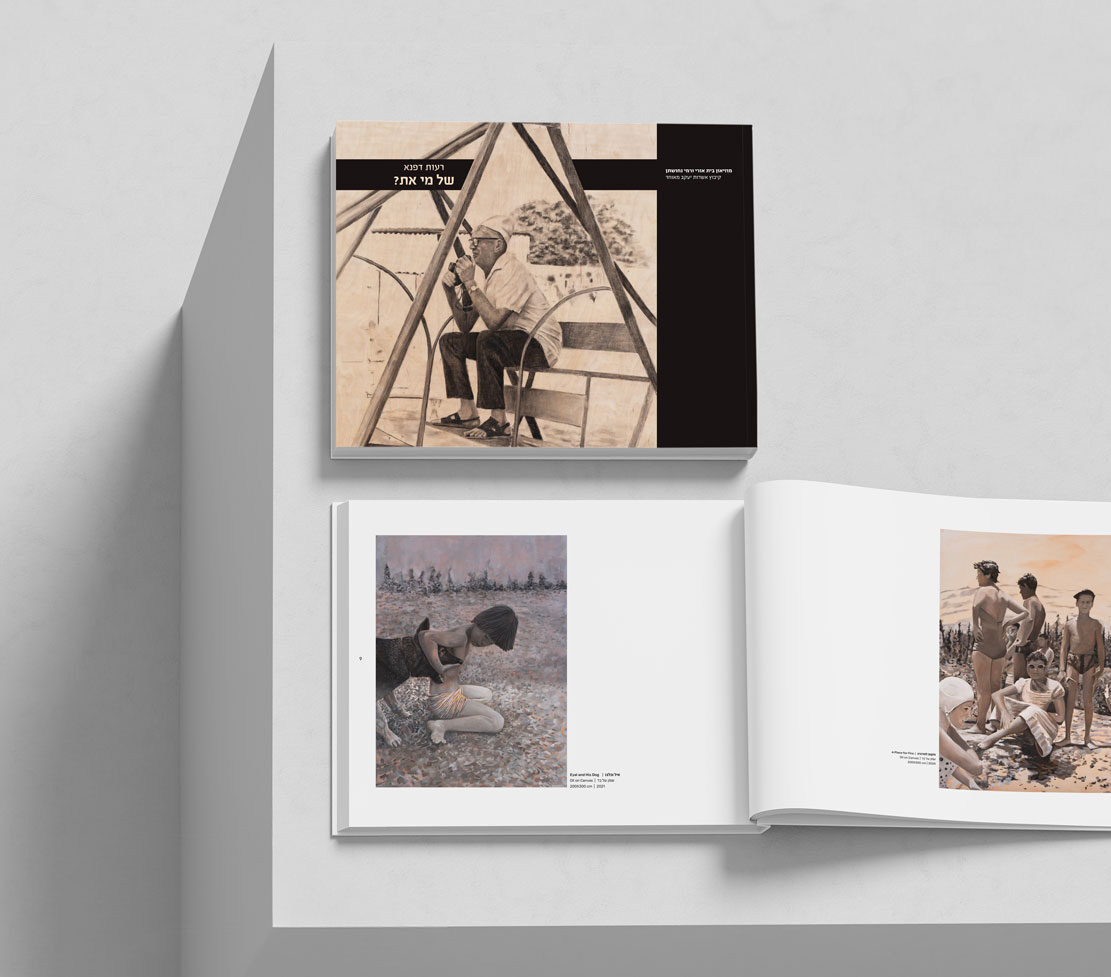To Whom do you belong?
A series by Reut Dafna
Reut Dafna, To Whom Do You Belong?
Curator: Dr. Ayelet Carmi
To Whom Do You Belong? is the first solo exhibition of the artist Reut Dafna. It features recent oil paintings and charcoal drawings based mainly on photographs from the archive of Kibbutz Maoz Haim, where Reut has been living since 2016 with her life partner, Asaf. Many archived photographs were taken by Avital Dafna (1916-1980), Asaf’s grandfather, one of the founders of the kibbutz and a central figure in the life of the community. Reut’s choice to use these photographs as a basis for her work expresses her desire to decipher her partner’s family heritage and the history and social codes of the place where she lives.
The paintings do not replicate the photographs. Reut enlarges them, or cuts into the frame; or she focuses on specific details, highlighting unusual compositions, and adding color. By emphasizing the aesthetic qualities of the photographs, she turns the familiar and ordinary into the unfamiliar and extraordinary. Defamiliarizing and aestheticizing everyday life not only presents the archived photographs as a subject worthy of attention, it also reveals the common themes in the kibbutz “family album,” illuminating its social codes and aesthetic forms.
The paintings blur the distinction between the illusory and the real, between a painting and a photograph. They explore the nature of the kibbutz’s visual memory, raising questions about
belonging and alienation, personal, familial, and local identity, and the complexity of communal relationships. These questions are folded into the title of the exhibition, “To Whom Do You Belong?”—a question that is commonly addressed to anyone who visits a kibbutz. After all, on the kibbutz everyone belongs to someone, or they don’t belong at all.
Among the paintings based on the archive photographs, Reut includes paintings based on her own family photographs, which depict her childhood on Moshav Sharona. She weaves the story of her family into the history of the Dafna family and Kibbutz Maoz Haim, combining the photographic histories of both families in one space. The deceptive visual play of the family paintings as belonging/not belonging to the kibbutz space, echoes the way in which Reut herself belongs yet does not belong to Maoz Haim and its history—in the conception of the valley, she is a new resident.
At first, it may seem as if her works portray a nostalgic image of the kibbutz. Yet, further examination highlights how they depict it as a space that includes feelings of loneliness and alienation, as well as differences and tensions between the needs of the individual and the collective ethos. In this space she moves between desiring to fit in and build common ground, and hoping to contribute another chapter to the historiography of the kibbutz—one that will include her own family story and artistic identity.

